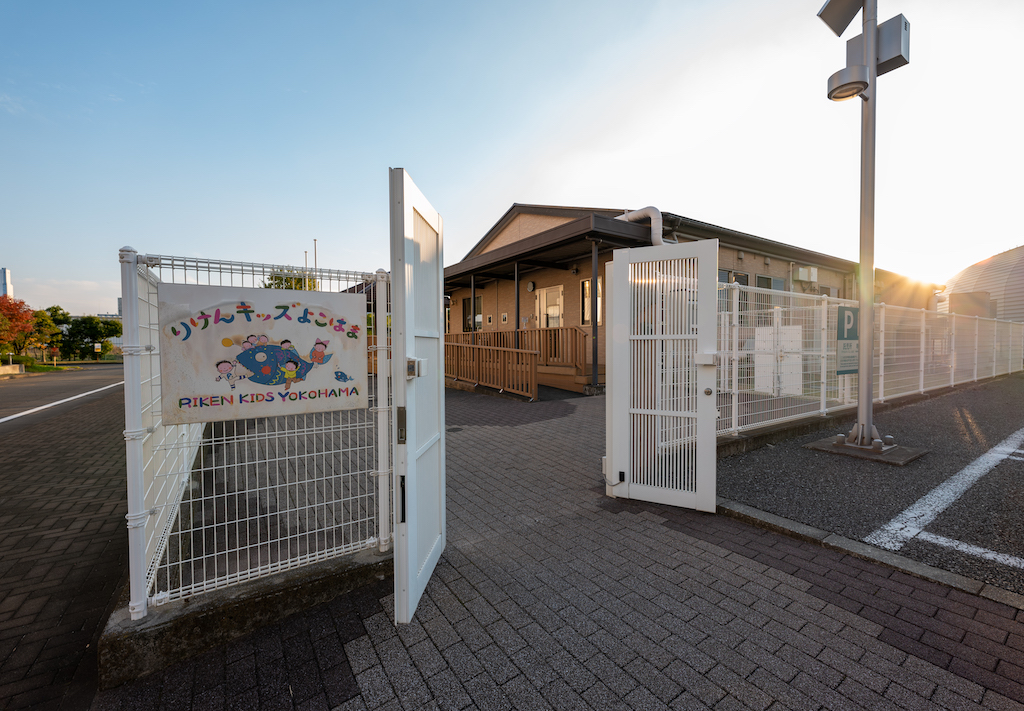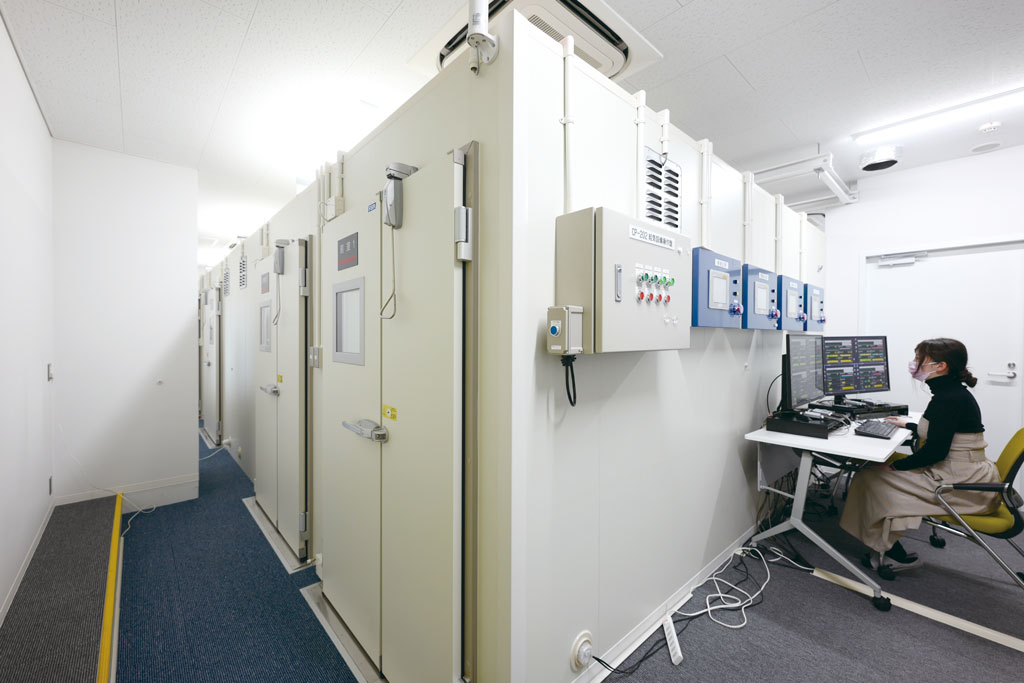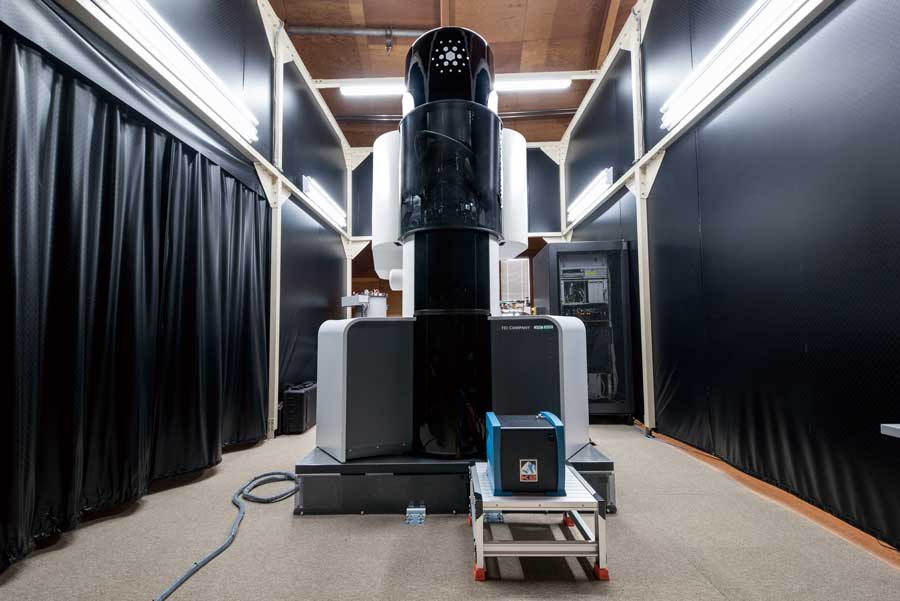
4K 1 GHz NMR Spectrometer
West NMR Complex, Yokohama Campus
The NMR spectrometer uses nuclear magnetic resonance phenomenon to study the structure of molecules. A strong static magnetic field of 23.5 Tesla is applied to the center of the cylinder by a superconducting magnet cooled to -269℃.

Kobe Bridge and Portopia Bridge
Chuo Ward, Kobe
Kobe’s city center of Sannomiya is connected to the man-made Port Island by two bridges and one undersea tunnel. This photo of the illuminated Kobe Bridge was taken from the Port Island side.

High-end 300kV cryo-electron microscope
Central NMR Complex, Yokohama Campus
The three cryo-electron microscopes (cryo-EMs) housed in the Central NMR Complex, aligned in a row. On the far right with its enclosure doors open is the latest, state-of-the-art cryo-EM that is equipped with an electron emission gun with an acceleration voltage of up to 300kV.

View from the eighth floor of the Integrated Innovation Building
Kobe Campus
The sunrise over Osaka Bay viewed from the east side of the top floor of the RIKEN Integrated Innovation Building (IIB), which is located on Port Island, an artificial island. Silhouettes of the gantry cranes along the wharf emerging in the morning sun.

RIKEN Kids Yokohama
Yokohama Campus
A childcare facility situated on RIKEN premises specifically for use by RIKEN employees. Both research and administrative staff are eligible to use the childcare services.

A path lined with azaleas
Osaka Campus
The Quantitative Biology Buildings consist of two buildings, A and B, between which there is a greenery-filled courtyard. The path winding through the courtyard is adorned with hedges of azaleas.

View from the seventh floor of the Developmental Biology Building
The Akashi Kaikyo Bridge connects the Honshu mainland (right) to Awaji Island (left) and is located across the sea approximately 18 km away from the Kobe Campus. At 3,911 meters long, it is the second longest suspension bridge in the world. The cape in the foreground extending from the right is where the ancient port of Kobe, Owada no tomari, is said to have been located.

Focused Ion Beam Scanning Electron Microscope
RIKEN–Hiroshima University Collaboration Research Facility
The focused ion beam scanning electron microscope (FIB-SEM) is a system which combines focused ion beams for processing or milling the surface of a sample and a scanning electron microscope for observing the surface of a material.

Quantitative Biology Building
Osaka Campus
The building was designed by the late Kenzo Tange (1913-2005), one of Japan’s leading architects, and was completed in 1987. The monument in front is a work by sculptor Yasuo Mizui, titled “GATE OF HOPE”.

Constant Temperature and Humidity Room
RIKEN BDR-DAIKIN Collaboration Center in Kobe
A laboratory with four interconnected test rooms, where room temperature and humidity can be strictly controlled. The laboratory can be set to simulate not only an ordinary air-conditioned office room but also environmental temperature …

Nanofabrication Equipment to Make Ultrafine Fluidic Devices
BioSystems Building, Osaka University
Instrument that emits electron beams on photosensitive material for nanoimprinting. A semiconductor processing technique used for LSI manufacturing is adapted for biological research.

Molecular Imaging Facility
MI R&D Center Building, Kobe Campus
We can observe what is going on inside the body without causing damage or harm, and visualize tissue organization, cell function, and molecular dynamics.

MDGRAPE-4A: Supercomputer for Molecular Dynamics Simulations
Osaka Campus
The computer simulates atomic motion and analyzes the interactions between proteins and drug molecules.

Cryo-electron Microscope
Yokohama Campus
An electron microscope that exhibits powerful capabilities for observing proteins and other biomolecules.

BDR Gallery
Kobe Campus
This exhibit gallery is designed to introduce concepts of “lifecycle research” through displays of research samples, models and movies to visitors …